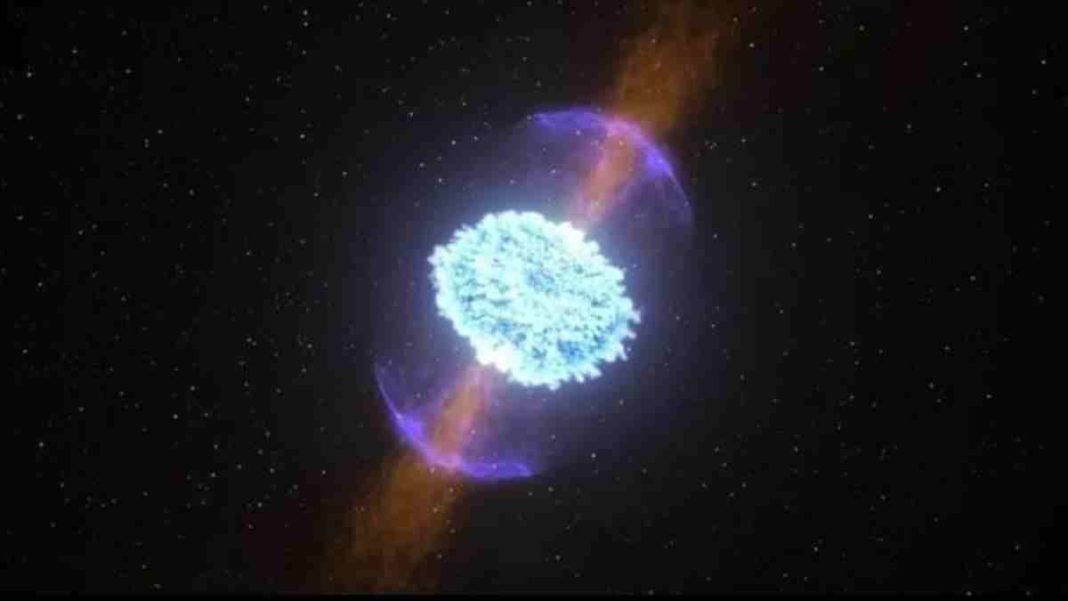UNITED STATES: Scientists have shed light on the potential dangers of a cosmic phenomenon known as a “kilonova,” and how it could disrupt our planet if it occurred within close proximity. Kilonovae, or violent star collisions, have been identified as rare events, but their catastrophic impact, if they were to occur nearby, has raised concerns about the threat to life on Earth.
Researchers from the University of Illinois Urbana-Champaign recently unveiled the findings of their study, emphasizing the lethal release of radiation, including gamma rays, cosmic rays, and x-rays, during these celestial occurrences. The implications of such events, if they were to happen within a specific range, are nothing short of apocalyptic.
Kilonova explained
A kilonova is the result of the immensely powerful collision of ultra-dense neutron stars, each with a mass equivalent to approximately one billion tons contained within a mere teaspoon.
The collision generates a particle explosion capable of annihilating Earth’s ozone layer, leaving our planet exposed to ultraviolet radiation for the subsequent 1,000 years, essentially constituting an extinction-level event.
According to Haille Perkins, a researcher at the University of Illinois Urbana-Champaign, many of the effects depend on variables like viewing angle to the event, blast energy, mass of material ejected, and more. As a result, it is difficult to pinpoint the precise distance to safety and the components that are most dangerous.
The lethal threats
Among the various lethal particles examined, researchers have identified cosmic rays as the most significant threat. A kilonova in space would generate a cosmic ray bubble that could engulf everything in its path, showering Earth with intensely charged particles.
Gamma rays, on the other hand, could theoretically incinerate celestial bodies within a span of 297 light-years. Even indirect exposure to gamma radiation could substantially deplete our ozone layer, requiring approximately four years for recovery. Furthermore, gamma ray interactions with the surrounding interstellar medium can generate ionizing X-ray emissions, affecting our ozone layer, which would last longer than the gamma ray impact but would require Earth to be within approximately 16 light-years of the event to be felt.
Rare but not immediate cause for panic
Perkins emphasized that kilonovas are indeed rare events, and there is no immediate cause for panic. She pointed out that other more common cosmic events, such as solar flares, asteroid impacts, and supernova explosions, have a higher likelihood of causing harm.
The study was based on an examination of a 2017 neutron star merger that occurred 130 million light-years away, releasing particles approximately 1,300 times Earth’s mass.
Originally, scientists thought that kilonovae could provide insights into the origins of heavy elements such as platinum, uranium, and gold.
Also Read: Remnants of Ancient Planet Theia Discovered Deep Within Earth’s Mantle



